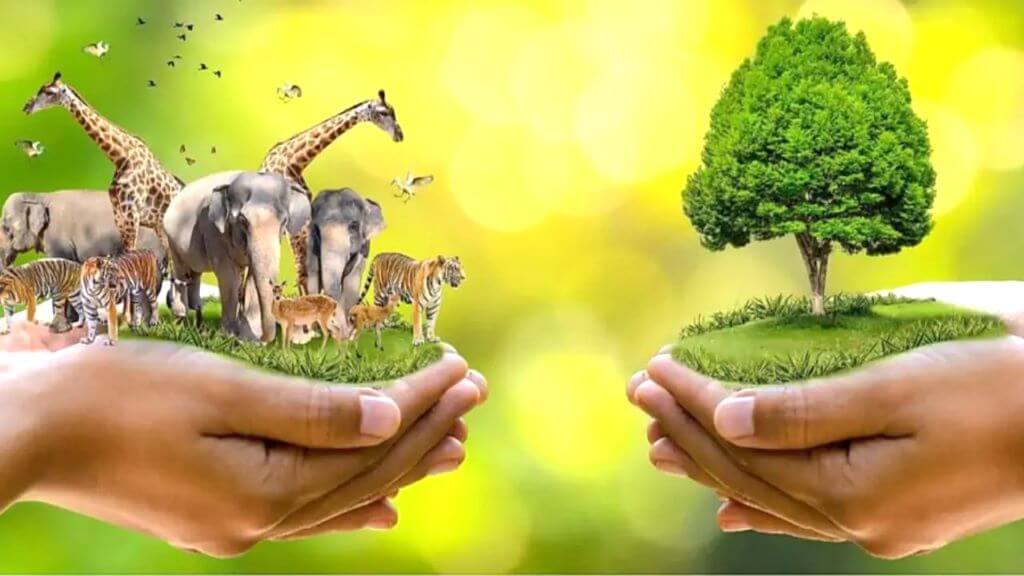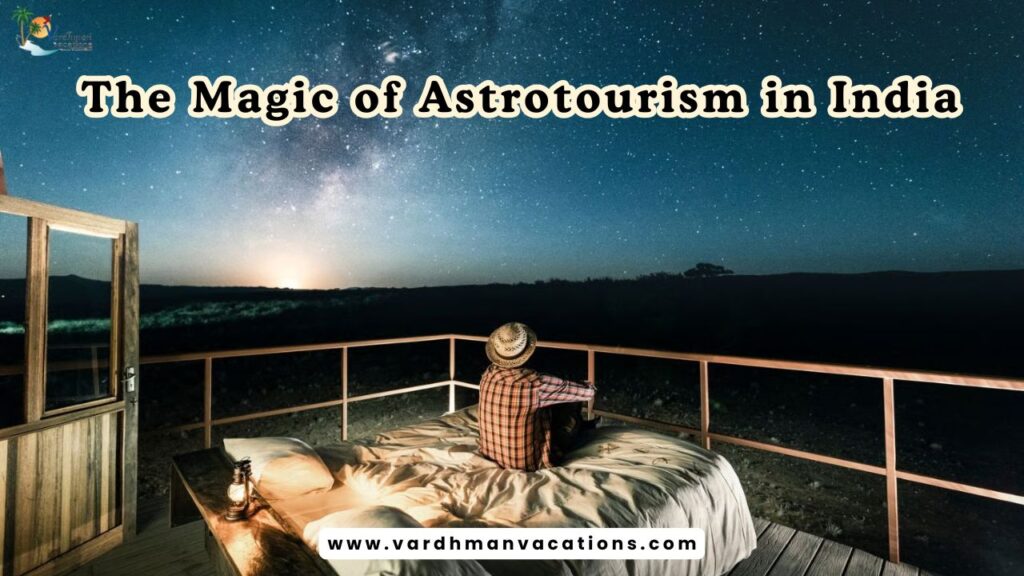Wildlife is the backbone of Earth’s ecosystem, playing a vital role in maintaining the planet’s delicate ecological balance. Every species, no matter how small, has a unique place in the food chain and contributes in its own way to the health of the environment.
Yet, the situation today is alarming. According to the IUCN, more than 47,000 species are currently threatened with extinction—nearly 28% of all assessed species.
In 2025 alone, we’ve witnessed how unchecked deforestation, mining, and road construction are wreaking havoc on fragile Himalayan ecosystems—destabilizing slopes, disrupting rivers, and accelerating habitat loss. These destructive actions don’t just endanger wildlife; they put human lives at risk. Flash floods in Dharali, Manali, Kishtwar, and the devastating Punjab floods serve as stark reminders of this interconnectedness.
The extinction of species is not a distant issue—it is a crisis unfolding before us. Weakening ecosystems means weakening the very systems that sustain humanity. Protecting wildlife is not just about saving animals; it is about safeguarding our planet, our communities, and our shared future.
Importance of Protecting Wildlife
Here are some key reasons that highlight the importance of protecting wildlife and explain its crucial role in preserving the ecological balance of our planet.
For a Healthy Ecosystem
An ecosystem thrives on the intricate relationships between organisms, connected through food chains and food webs. The extinction of even a single species can disrupt this delicate balance, causing a ripple effect with disastrous consequences.
Take bees, for instance. These tiny pollinators are essential for the growth of many crops. A decline in their population means less pollination, which directly impacts food production. This example alone shows why conserving wildlife is vital for ecological stability.
On the other hand, unchecked growth of certain species can be just as harmful. Carnivores, for example, are rapidly declining due to poaching and hunting. With fewer predators, herbivore populations grow unchecked, leading to overgrazing of forest vegetation. Eventually, this forces herbivores to invade agricultural lands and villages in search of food, creating conflict with humans.
Wildlife conservation, therefore, is not just about protecting animals—it is about maintaining the natural checks and balances that keep ecosystems healthy and sustainable.
For Protection Against Climate Change
Wildlife and ecosystems play a critical role in reducing the impacts of climate change. Forests, often called the “lungs of the Earth,” act as carbon sinks by absorbing carbon dioxide through photosynthesis. When forests are destroyed, vast amounts of stored carbon are released back into the atmosphere, intensifying global warming and fueling extreme weather events, rising sea levels, and shifting climate patterns. Protecting forests and the wildlife within them is therefore essential for climate change mitigation.
Coastal ecosystems such as mangroves, coral reefs, and salt marshes serve as natural shields, protecting shorelines from storm surges, floods, and erosion. These habitats not only support diverse marine life but also act as buffers against the increasing risks posed by climate change.
Even species like large herbivores and carnivores influence ecosystem dynamics in ways that affect carbon storage and habitat health. Their presence—or absence—can shape the resilience of entire ecosystems. Recognizing and conserving these intricate connections between wildlife and the climate is vital to securing a safer, more sustainable future.
For Their Medicinal Values
Wildlife has long been a source of life-saving medicines and treatments for humankind. Many modern drugs trace their origins back to nature—aspirin from willow bark, penicillin from fungi, quinine from cinchona trees, morphine from poppies, and vincristine from periwinkle plants. Traditional systems like Ayurveda have also relied on plant extracts and herbal formulations for centuries to treat conditions such as high blood pressure, diabetes, and neurological disorders.
It’s not just plants that benefit us—animals, too, play a crucial role in medicine. Cod liver oil, rich in omega-3 and omega-6 fatty acids, is widely known for its role in heart and brain health. Compounds from shrimps and lobsters are used to treat fungal infections, while cobra venom has been utilized in therapies for leprosy. Beyond these, countless animal species are being studied for potential cures to serious illnesses, including cancer, Alzheimer’s, and Parkinson’s.
Nature’s pharmacy continues to inspire breakthroughs in biotechnology and modern medicine. Protecting wildlife and preserving genetic diversity is therefore not only an ecological responsibility but also a vital investment in the future of human health.
For Agriculture and Horticulture
Human survival depends heavily on agriculture, yet few realize how deeply connected crop growth is to wildlife. Fruits and vegetables that nourish us exist largely because of pollination—a process where pollen from the male part of a flower is transferred to the female part, enabling seed and fruit production. Birds, bees, butterflies, and other tiny creatures are the unsung heroes of this process, ensuring that plants reproduce and our food supply remains steady.
The decline of pollinators poses a serious threat to global food security. In fact, about 75% of the world’s leading food crops rely on animal pollination. A drop in the population of bees, insects, or birds could drastically reduce yields, affecting not just farmers but the entire human population.
Wildlife also supports agriculture beyond pollination. Many bird species help regulate pest populations by feeding on harmful insects, offering a natural, eco-friendly alternative to chemical pesticides. This built-in system of pollination and pest control demonstrates how vital wildlife is in sustaining agriculture and horticulture, and ultimately, in feeding humanity.
For a Cleaner, Safer Environment
Wildlife plays a vital role in maintaining a clean and healthy environment. Countless microorganisms—such as bacteria, fungi, slime molds, and earthworms—feed on plant and animal waste, breaking it down and returning essential nutrients to the soil. This natural recycling process enriches the soil, boosts plant growth, and sustains the cycle of life.
Larger creatures also contribute to environmental health. Birds like vultures and eagles, often seen as scavengers, are in fact crucial to nature’s cleanup system. By feeding on animal carcasses, they prevent the spread of diseases and keep ecosystems hygienic. Imagine a world where dead bodies of animals remained scattered and decaying around us—it would be unsafe and unbearable. Thanks to these natural cleaners, our surroundings remain balanced, safe, and livable.
For Preserving Rich Biodiversity
Preserving biodiversity is one of the most important steps toward safeguarding our future. Today, scientists and researchers are working tirelessly to conserve plant and animal species through gene banks—storehouses of cells, tissues, and genetic material from a wide variety of species. These reserves act as a safety net, ensuring that original plant varieties and animal breeds can be regenerated in the event of epidemics, climate change, or natural disasters that threaten their survival. A well-known example is the Svalbard Global Seed Vault, which safeguards millions of seed samples as a global backup for food security.
Gene banks don’t just preserve seeds—they also store sperm, eggs, embryos, and even reproductive tissues like ovaries and testes from mammals. Advances in science make it possible to revive endangered species, improve genetic diversity, and even create new, stronger breeds. In agriculture, for instance, genetically enhanced plants are often higher-yielding, more resistant to pests and diseases, and contribute to soil health. Similarly, crossbreeding in dairy cattle has led to healthier animals that produce more milk and live longer.
Such innovations underline why biodiversity matters. By conserving and improving genetic diversity, we are not only saving wildlife but also strengthening ecosystems, food systems, and human resilience against future environmental challenges.
For Recreation Benefits
Have you ever wondered what the world would look like without forests, rivers, or wildlife? Where would you go for a thrilling wildlife safari, peaceful bird watching, or a photography expedition if these natural treasures disappeared? Imagine lakes and rivers without fish, or worse, vanishing altogether due to climate change. The thought alone shows how deeply our recreational experiences are tied to the survival of nature.
Ecotourism, one of the fastest-growing sectors in travel, thrives on unspoiled landscapes and rich biodiversity. From trekking in lush forests to snorkeling in coral reefs, these experiences are only possible because of healthy ecosystems and thriving wildlife. Protecting nature is, therefore, not just about conservation—it’s also about preserving opportunities for recreation, relaxation, and adventure.
If deforestation, overfishing, and habitat destruction continue unchecked, future generations may never experience the wonders of nature firsthand. Instead of taking our children to wildlife parks to watch animals in their natural habitats, we may be left showing them pictures in books labeled with the tragic words: “Extinct Species.”
For Economic Value
Wildlife is not only vital for ecosystems but also for economies. Wildlife reserves, national parks, and forests attract tourists from across the globe, eager to witness rare and endemic species. Activities such as game safaris and birding tours bring in substantial foreign exchange, directly boosting a country’s GDP. In India alone, wildlife tourism contributes nearly 5–6.5% to the national GDP, highlighting its importance as a revenue generator.
The economic value of wildlife extends beyond safaris and birdwatching. Adventure activities like trekking, fishing, and river rafting also require permits and licenses, which contribute to government revenue. Additionally, every tourist’s journey—covering transport, food, accommodation, and sightseeing—injects money into local economies. For rural communities near wildlife zones, this influx creates seasonal jobs and sustainable livelihoods, strengthening both conservation and economic growth.
Recognizing this potential, many countries actively promote wildlife tourism—even by creating artificial habitats to attract visitors. Singapore, for instance, has successfully developed world-class wildlife parks and zoos that host species from around the globe, turning them into major tourism attractions.
In short, protecting wildlife isn’t just about nature—it’s also a powerful investment in economic prosperity and community development.
For Livelihood of Individuals
For millions of people around the world, wildlife is not just a part of nature—it is their livelihood. Fishermen depend on healthy fish populations for their daily income, while farmers rely on pollinators and fertile soils for good crop yields. Entire industries, such as textiles, paper, timber, and rubber, are sustained by resources derived from wildlife. Even hotels and resorts near wildlife reserves owe their existence to the animals and forests that attract visitors.
Wildlife tourism alone supports countless jobs. From guides, drivers, and porters to mahouts, equipment suppliers, and local artisans, many individuals and families earn their living from the tourism economy built around nature. The demand for birdwatching gear, safari tours, scuba-diving equipment, or even photography excursions highlights how diverse and far-reaching this sector is.
In some regions, communities also engage in sustainable and legal wildlife product trades, such as leather goods, fur alternatives, and ivory-free crafts, which provide income while ensuring conservation. For these people, wildlife is not just part of the ecosystem but the backbone of their survival.
If Earth’s flora and fauna were to vanish, the loss would not only devastate those directly dependent on wildlife but also create a ripple effect across global economies. Where would humanity turn for fruits, vegetables, grains, wood, fibers, and countless other essentials? Protecting wildlife, therefore, is inseparable from protecting human livelihoods.
For Aesthetic Value
Have you ever noticed how much joy comes from being surrounded by lush greenery, vibrant flowers, and the soothing calls of birds? Nature’s beauty has a unique power to uplift our spirits and bring peace to our minds. Forests, rivers, oceans, birds, and animals together create the scenic charm that makes our planet so breathtaking.
Without wildlife and natural landscapes, Earth would lose its color, turning into a barren, lifeless land. The sights and sounds of nature not only enrich our surroundings but also inspire art, culture, and even spirituality. They make our world livable, joyful, and full of wonder.
If we want to continue living in a world filled with beauty, harmony, and life, we must protect wildlife and preserve nature—because once lost, this aesthetic richness can never truly be replaced.
For Socio-Cultural Value
Wildlife has always held deep significance in human culture, traditions, and spirituality. Many plant and animal species form the cultural backbone of communities, symbolizing values, beliefs, and ancestral wisdom. In many societies, certain animals are revered as sacred or associated with gods and goddesses, reflecting humanity’s age-old connection with nature.
For example, in Hinduism, the cow is revered as a mother figure, symbolizing nourishment and compassion. In Native American traditions, hawks and eagles are regarded as sacred messengers, representing strength, vision, and freedom. These cultural associations have played a vital role in protecting species through generations, ensuring their survival and continued contribution to human well-being.
Such traditions remind us that wildlife conservation is not just an ecological or economic necessity—it is also a matter of preserving heritage, identity, and spirituality. Protecting wildlife means protecting the cultural threads that connect us to our ancestors and to the natural world itself.
Steps to Conserve Wildlife
Protecting our planet’s invaluable wildlife may feel overwhelming, but every small action matters. Conservation is not only the responsibility of governments and organizations—it begins with awareness, lifestyle choices, and collective effort. Here are some crucial steps we can all take to conserve wildlife:
- Reduce Your Carbon Footprint: Save energy at home, switch to public transportation or carpooling, and choose sustainable alternatives to lower emissions.
- Support Wildlife-Friendly Products and Businesses: Avoid items linked to deforestation, illegal wildlife trade, or habitat destruction. Responsible consumer choices directly protect ecosystems.
- Educate Yourself and Others: Share knowledge about the importance of wildlife conservation with friends, family, and community members to build collective awareness.
- Volunteer or Donate: Support wildlife sanctuaries, rehabilitation centers, or conservation organizations—whether through time, skills, or financial contributions.
- Participate in Citizen Science: Get involved in initiatives like bird counts, butterfly monitoring, or plant surveys to help scientists track species and ecosystem health.
- Advocate for Stronger Laws: Support policies that strengthen wildlife protection, stop poaching, and preserve natural habitats.
- Reduce, Reuse, Recycle: Cut down on single-use plastics and manage waste responsibly to protect marine and terrestrial ecosystems.
- Enjoy Wildlife Responsibly: Follow eco-tourism guidelines—do not feed animals, disturb habitats, or leave litter behind. Respect nature from a distance.
Protecting wildlife is a shared responsibility. While governments and organizations continue to strengthen conservation policies, public participation is equally vital. By making small, conscious choices in our daily lives, we can collectively safeguard wildlife and ensure a healthier, more sustainable planet.
Conclusion
Wildlife is not just about the animals and plants we see—it’s the foundation of our planet’s ecological balance, cultural heritage, and natural beauty. Every species, big or small, plays a role in keeping ecosystems healthy and supporting human life in countless ways. By conserving wildlife, we are ultimately securing our own future and ensuring that generations to come inherit a thriving, vibrant Earth.
Conservation doesn’t always require grand gestures—even small steps like reducing waste, supporting ethical businesses, and spreading awareness can create lasting change. Together, our efforts can protect the extraordinary biodiversity of our planet and keep it alive with color, culture, and life.
FAQs About Wildlife Conservation
Wildlife conservation is essential to maintain biodiversity, protect ecosystems, and ensure ecological balance. It also supports human survival by providing food, clean air, water, medicine, and cultural value.
The biggest threats include deforestation, habitat loss, climate change, illegal hunting and poaching, pollution, and the illegal wildlife trade.
Simple steps like reducing plastic use, supporting eco-friendly products, volunteering in conservation projects, spreading awareness, and respecting animals in their natural habitats can make a big difference.
Wildlife supports livelihoods, maintains environmental health, provides resources for industries, offers cultural and spiritual value, and contributes to recreation and tourism.
Yes. Protecting forests, wetlands, and oceans allows ecosystems to absorb carbon dioxide, regulate temperatures, and reduce the harmful effects of climate change.
Some notable organizations include the World Wildlife Fund (WWF), Wildlife Trust of India (WTI), International Union for Conservation of Nature (IUCN), and local NGOs that focus on habitat protection and species recovery.







